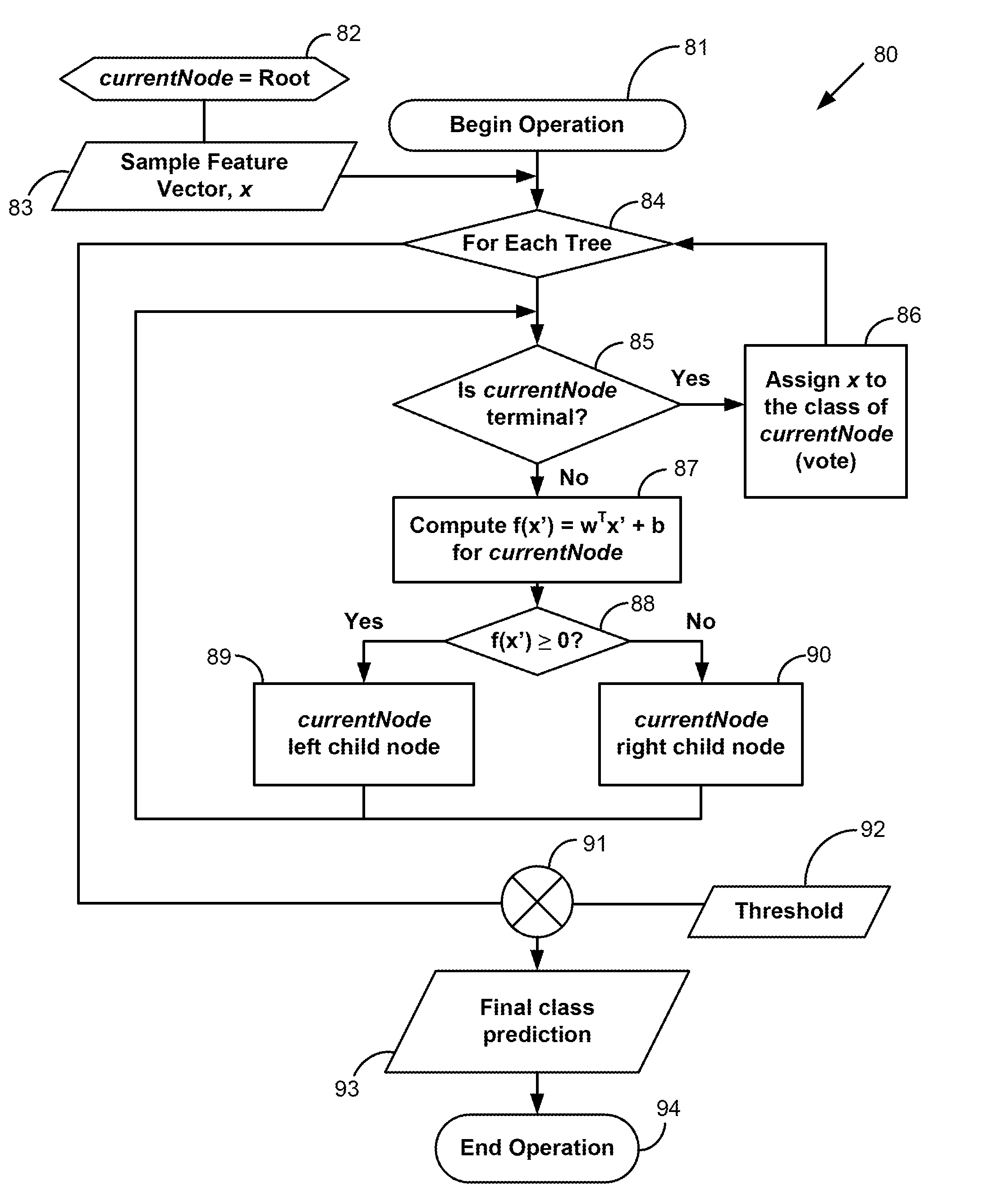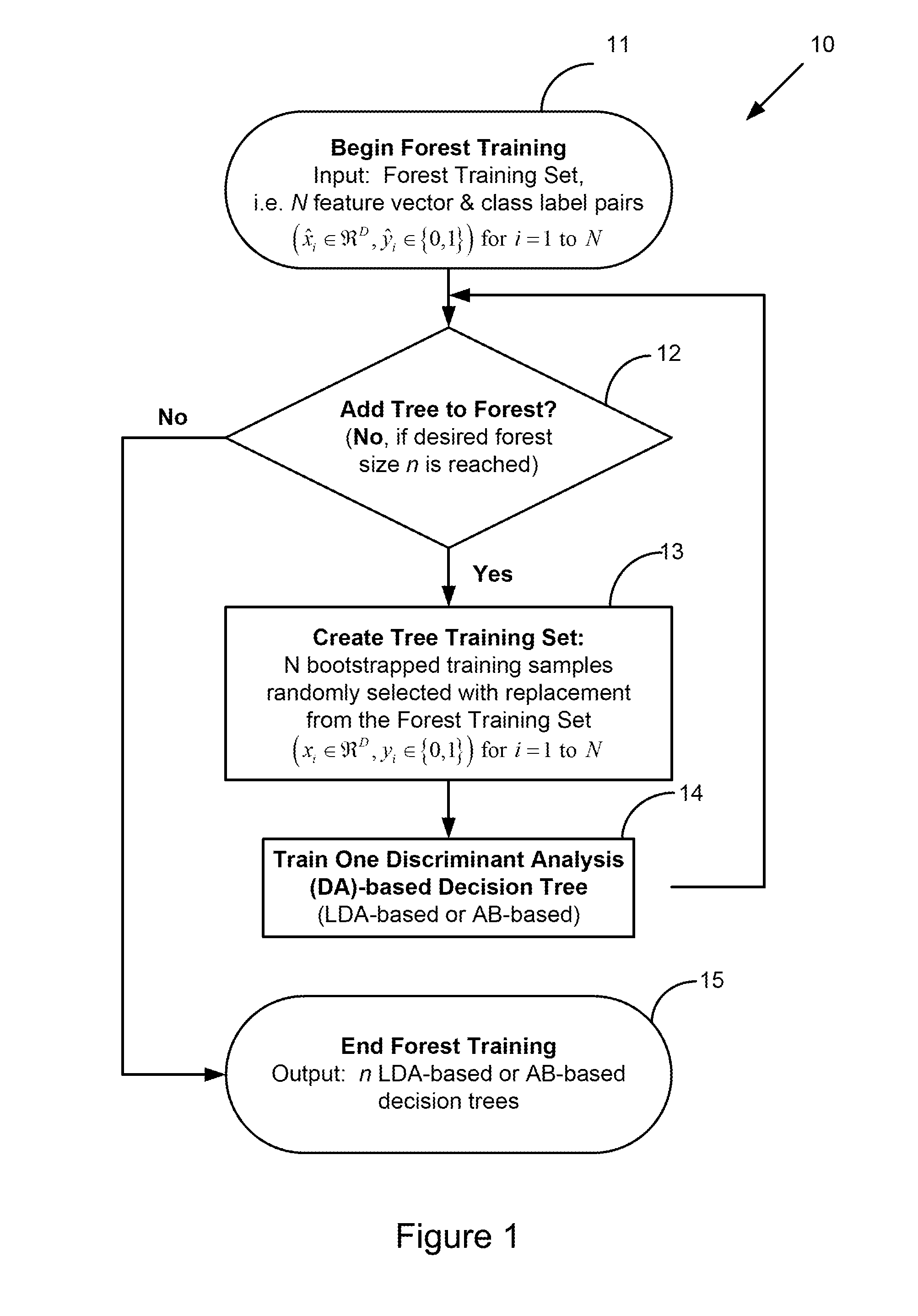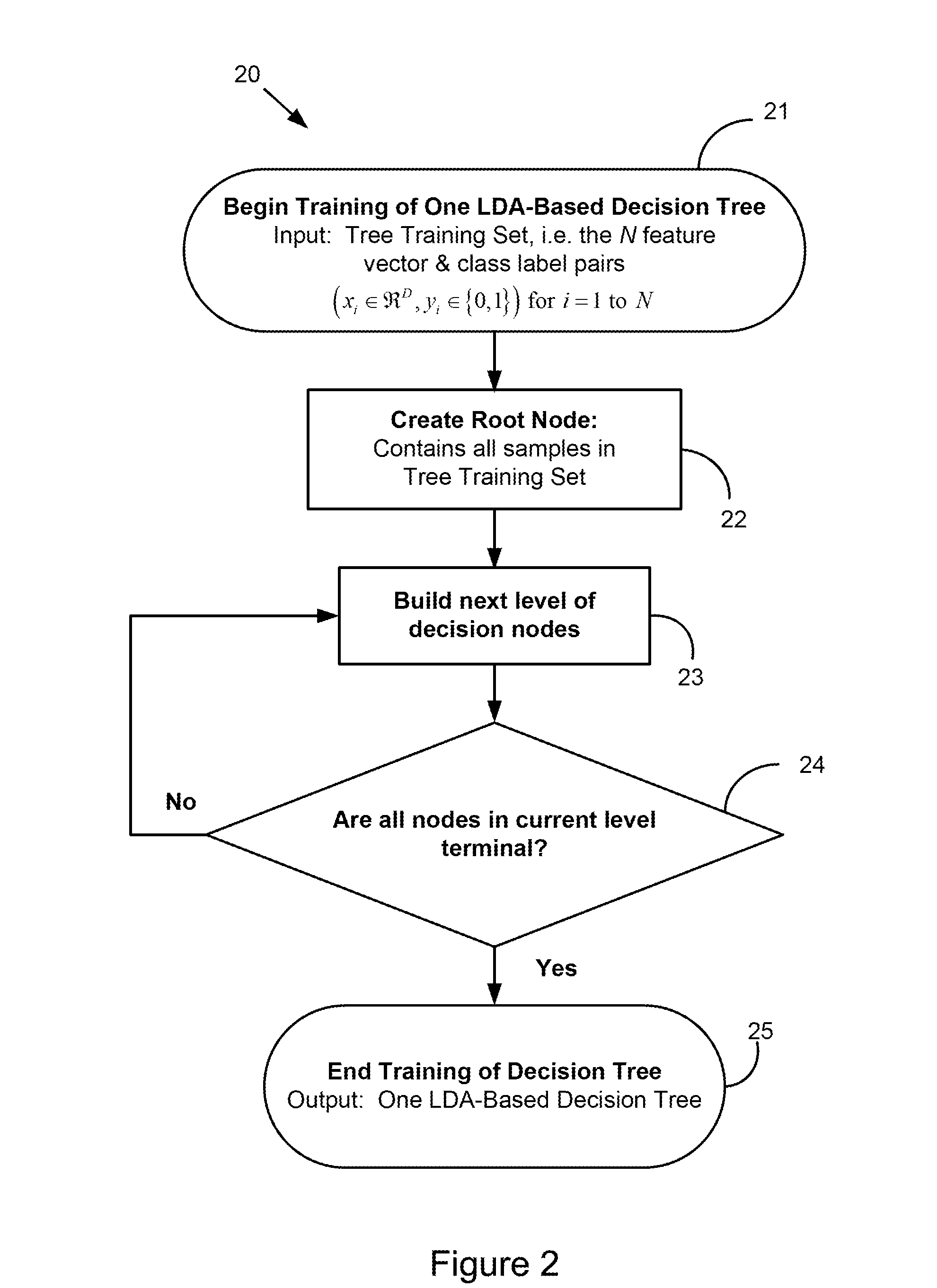Discriminant Forest Classification Method and System
- Summary
- Abstract
- Description
- Claims
- Application Information
AI Technical Summary
Benefits of technology
Problems solved by technology
Method used
Image
Examples
Embodiment Construction
[0060]Turning now to the drawings, FIG. 1 generally shows a flowchart of an exemplary forest training method, indicated at reference character 10, used in the discriminant forest (DF) classification methodology and system of the present invention. Forest training begins at block 11, where a forest training set is first provided to a computerized system (not shown) for training the computerized system. In particular, the forest training set includes N feature vector and class label pairs, ({circumflex over (x)}iε,ŷiε{0,1}) for i=1 to N, where {circumflex over (x)}i is the feature vector selected from the available feature set, D, and ŷ, is the class label. It is appreciated that the forest training set may be provided in various ways, for example, as input from a user via a command-line or graphic user interface, or via access from a database having the forest training set stored thereon in a manner known in the art.
[0061]Next, at block 12, a determination is made whether to add a tr...
PUM
 Login to View More
Login to View More Abstract
Description
Claims
Application Information
 Login to View More
Login to View More - R&D
- Intellectual Property
- Life Sciences
- Materials
- Tech Scout
- Unparalleled Data Quality
- Higher Quality Content
- 60% Fewer Hallucinations
Browse by: Latest US Patents, China's latest patents, Technical Efficacy Thesaurus, Application Domain, Technology Topic, Popular Technical Reports.
© 2025 PatSnap. All rights reserved.Legal|Privacy policy|Modern Slavery Act Transparency Statement|Sitemap|About US| Contact US: help@patsnap.com



